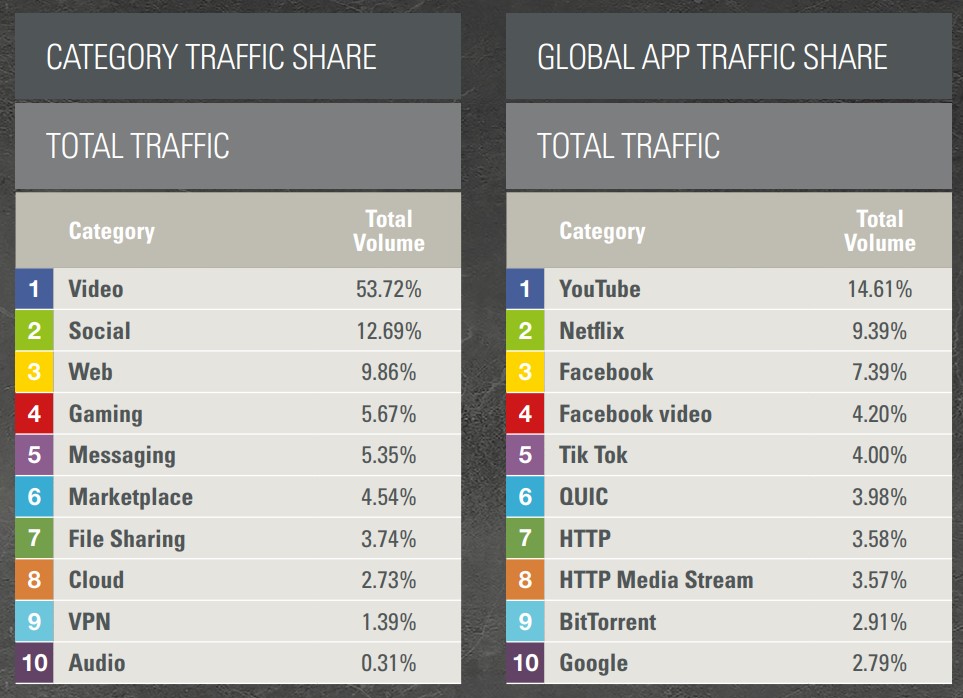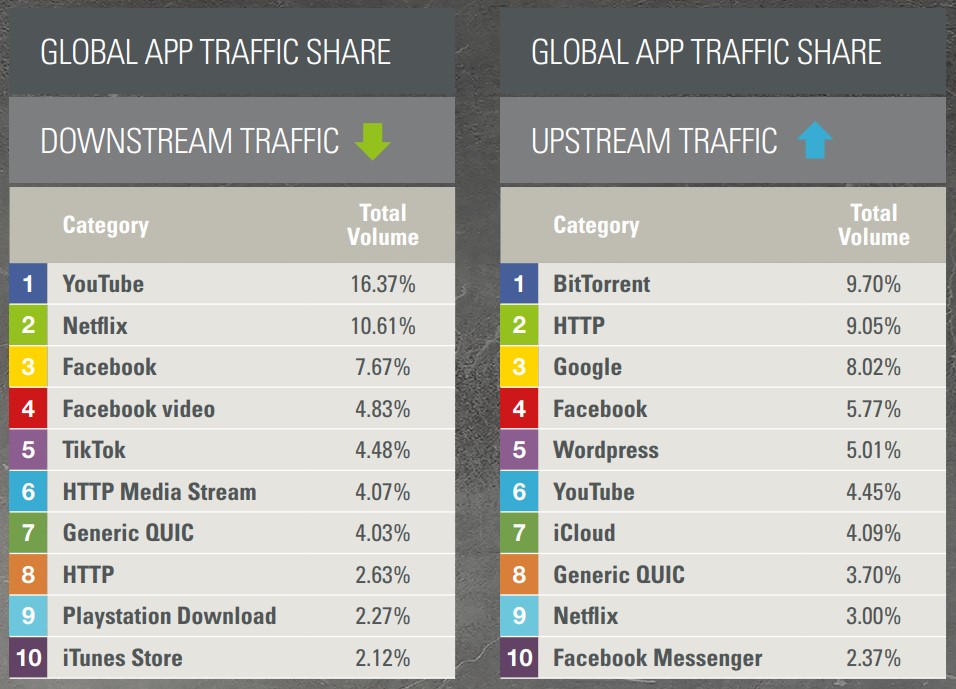 Many Internet traffic reports have been published over the years, documenting how traffic patterns change over time.
Many Internet traffic reports have been published over the years, documenting how traffic patterns change over time.
One of the trends that emerged in recent years, is that BitTorrent’s share of total Internet traffic decreased.
With the growth of services such as YouTube, Netflix, and TikTok, streaming has consumed massive amounts of bandwidth. As a result, BitTorrent lost a significant chunk of its ‘market share’.
BitTorrent Comeback?
This trend gradually increased until a few years ago, when the Canadian broadband management company Sandvine signaled a BitTorrent revival. In some parts of the world, file-sharing traffic including BitTorrent started to gain market share again.
Sandvine’s 2018 report found that more than 20% of all global upstream traffic could be attributed to BitTorrent.
At the time, BitTorrent’s upload share was relatively modest in the Americas, accounting for a little over 9%. In the EMEA region, which covers Europe, the Middle East and Africa, there was a clear upward trend as roughly a third of all uploads were torrent-related.
The latest bandwidth study published by Sandvine shows that, a few years later, there is not much left of this comeback. On the contrary, the downward trend continues once again.
BitTorrent is Losing Ground Again
The 2022 “Global Internet Phenomena” report shows that, globally, less than 3% of all consumer traffic can be attributed to BitTorrent. This percentage was as high as 35% in the mid 2000s, but the internet has changed dramatically since then.
Today, video accounts for more than half of all traffic on the Internet with YouTube and Netflix as the dominant players. TikTok, a relative newcomer, is gaining ground rapidly and has already surpassed BitTorrent.

Unlike other applications, BitTorrent typically demands more upstream resources and this is clearly visible in the data. Globally, BitTorrent is still in the lead in terms of upload traffic, accounting for nearly 10% of the total.
Whether BitTorrent will be able to maintain this lead is doubtful. Regular HTTP traffic and Google are closing in and these could surpass torrent upstream traffic in the coming year.

Mobile Traffic and Regional Differences
There are some other interesting patterns we observed. For example, when we look at mobile traffic we see that BitTorrent has a higher downstream market share than on fixed connections. It’s roughly on par with other popular apps such as TikTok.
According to Sandvine, this can be partially explained by the fact that companies such as Facebook and Twitter use BitTorrent technology to distribute content to users.
“BitTorrent is also higher up in the rankings on mobile networks as it is increasingly being used to distribute updates to Facebook and Twitter servers as well as for transferring large files like video and music clips,” Sandvine writes.
Looking at the overall traffic numbers, we see that there are quite a few regional differences as well. In the Americas, for example, BitTorrent only accounts for 6% of all upstream traffic, but in EMEA, this is nearly double, close to 12%.
Relative, Not Absolute
While BitTorrent may soon lose its crown as the king of upstream traffic, this doesn’t automatically imply that the absolute volume is decreasing.
All the figures reported here are relative to the total bandwidth used on the Internet, which is steadily growing. This means that even if BitTorrent’s ‘share’ dropped significantly, BitTorrent may still generate more traffic than a decade ago.





